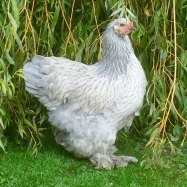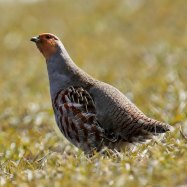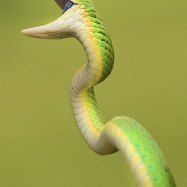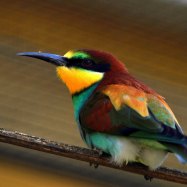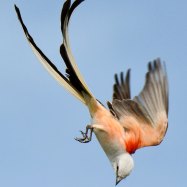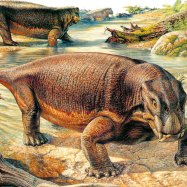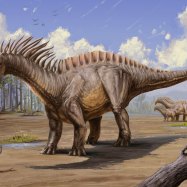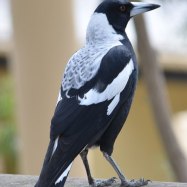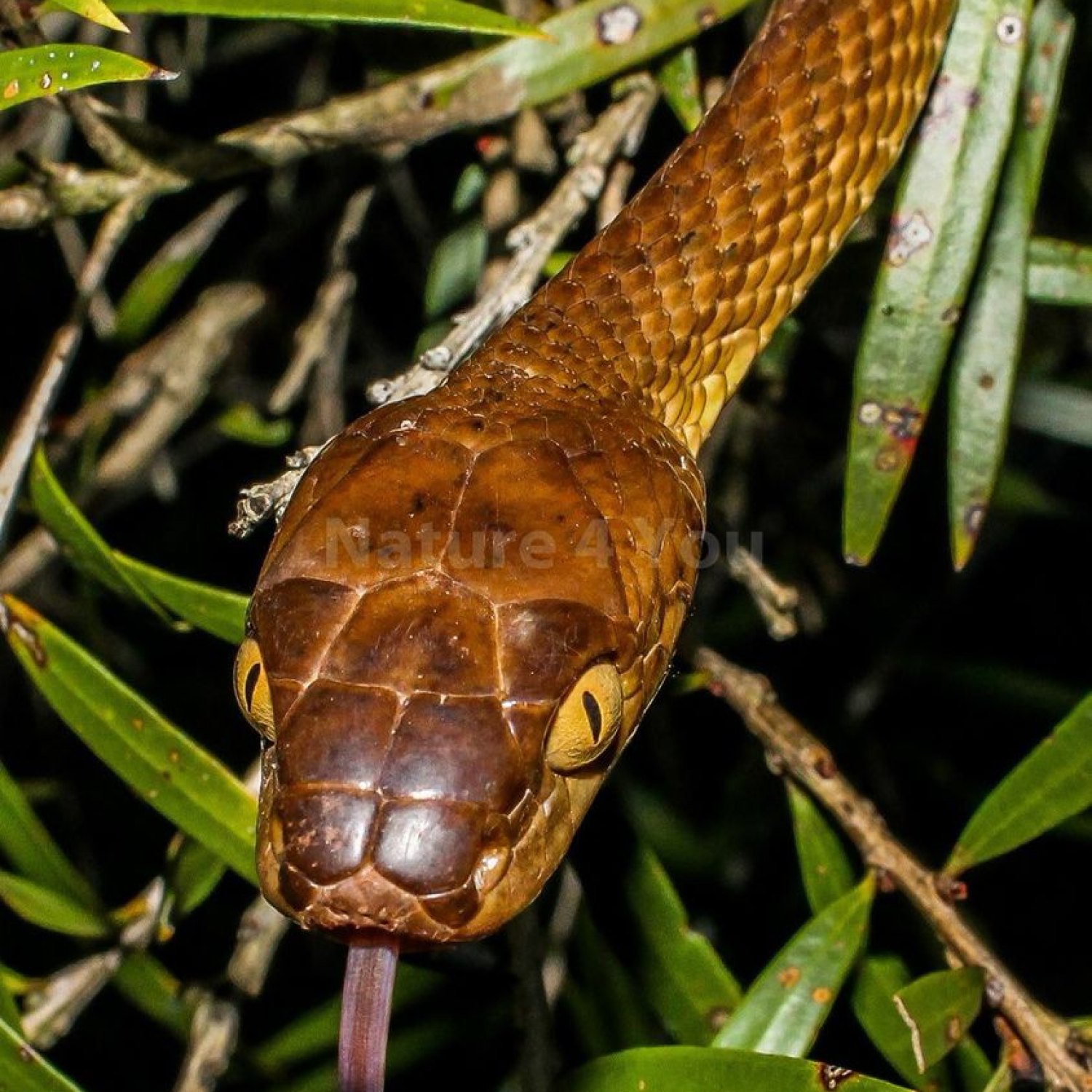
Brown Tree Snake
Up to 2 meters (6.6 feet)
The Brown Tree Snake, found in Australia's northern and eastern regions, is a slender and elongated snake that can reach up to 2 meters in length. Belonging to the Colubridae family, it is a common animal in Australia. Keep these facts in mind to identify and appreciate this beautiful creature in the wild. #BrownTreeSnake #Australia #Colubridae
Animal Details Summary:
Common Name: Brown Tree Snake
Kingdom: Animalia
Habitat: Trees, forests, grasslands, and urban areas
The Fascinating World of the Brown Tree Snake
There is a creature that is as fascinating as it is feared. Its smooth, slender body allows it to effortlessly glide through the trees, while its sharp vision and deadly venom make it a formidable predator. This animal, known as the Brown Tree Snake, is a master of survival, and its adaptability has allowed it to thrive in some of the most challenging environments.The Brown Tree Snake, scientifically known as Boiga irregularis, is a species of snake that belongs to the kingdom Animalia, phylum Chordata, and class Reptilia Brown Tree Snake. This fascinating reptile is a member of the family Colubridae, which is the largest and most diverse of all snake families. It is often referred to simply as the Brown Tree Snake, as its common name perfectly describes its physical appearance and preferred habitat.
This serpent is native to the northern and eastern regions of Australia, Papua New Guinea, and the Solomon Islands. However, it is important to note that this distribution has not always been the case. These snakes were accidentally introduced to Guam after World War II, and their population has since exploded, causing significant ecological and economic damage to the island.
Habitat and Adaptability
The Brown Tree Snake is known for its incredible ability to adapt to a wide range of environments. This species can be found in trees, forests, grasslands, and even urban areas. They are nocturnal creatures that spend their days hiding in the trees and emerge at night to hunt for prey.Their preferred habitat is the tropical forests and open woodlands of northern and eastern Australia Blue Belly Lizard. Here, they can easily find shelter and food, as well as an abundance of trees to climb and hunt in. They are also known to inhabit urban areas, which has helped them spread to new regions and become an invasive species in some areas.
Feeding Habits
The Brown Tree Snake is a carnivorous predator, and its diet consists mainly of small vertebrates, such as lizards, birds, and small mammals. However, they have also been known to eat insects, eggs, and other snakes. Their ability to eat such a wide range of prey has contributed to their adaptability and success as a species.These snakes use a combination of stealth and lightning-fast strikes to capture their prey. They have powerful muscles and highly specialized teeth that allow them to hold onto their prey firmly and subdue it quickly. Their venom, while not deadly to humans, is toxic enough to immobilize their prey and make it easier to consume.
Physical Characteristics
The Brown Tree Snake is a beautiful serpent, with variable shades of brown that give it excellent camouflage in its natural habitat. This coloration also varies depending on the individual's location, with snakes in the southern regions of Australia being lighter in color than those in the northern regions. Some individuals even have patterns and markings on their skin, adding to their unique charm.Their body shape is slender and elongated, allowing them to move effortlessly through the trees. This species has a long, thin body with a small, pointed head and large eyes that give it excellent vision both day and night. They have smooth scales and are non-venomous to humans, making them relatively harmless.
Size and Behavior
The Brown Tree Snake can reach up to 2 meters (6.6 feet) in length, with females typically being larger than males. They are solitary creatures and are mostly active at night, although they can occasionally be seen basking in the sun during the day.Unlike most snakes, this species is not known for its aggression towards humans. They are generally shy and will avoid confrontation if possible. If threatened, they may bite, but their venom poses little danger to humans. However, they can become defensive when defending their eggs or young.
Invasive Species
The Brown Tree Snake has become an invasive species in some regions, most notably on the island of Guam. Their accidental introduction to the island has led to a catastrophic impact on the local wildlife, with many bird and reptile populations declining significantly.This species has adapted so well to its new environment that it has rapidly increased its population and now poses a significant threat to the island's ecosystem. Efforts are being made to control and eradicate the snake, but it has proven to be a challenging task due to the species' adaptability and resilience.
Conclusion
In conclusion, the Brown Tree Snake is a truly remarkable creature that has captured the imagination of many. Its adaptability, beauty, and effortless grace make it a true marvel of the natural world. However, we must also remember the potential damage that can be caused when a species becomes an invasive one, highlighting the importance of responsible and thoughtful interventions in our natural environments.As we continue to learn about and appreciate the unique qualities of the Brown Tree Snake, it is essential to also consider the impact we have on their habitats and ecosystems. By respecting and diligently protecting the environment, we can ensure that these incredible creatures continue to thrive for generations to come.

Brown Tree Snake
Animal Details Brown Tree Snake - Scientific Name: Boiga irregularis
- Category: Animals B
- Scientific Name: Boiga irregularis
- Common Name: Brown Tree Snake
- Kingdom: Animalia
- Phylum: Chordata
- Class: Reptilia
- Order: Squamata
- Family: Colubridae
- Habitat: Trees, forests, grasslands, and urban areas
- Feeding Method: Carnivorous
- Geographical Distribution: Northern and eastern regions of Australia, Papua New Guinea, and the Solomon Islands
- Country of Origin: Australia
- Location: Northern and eastern regions of Australia
- Animal Coloration: Variable shades of brown
- Body Shape: Slender and elongated
- Length: Up to 2 meters (6.6 feet)
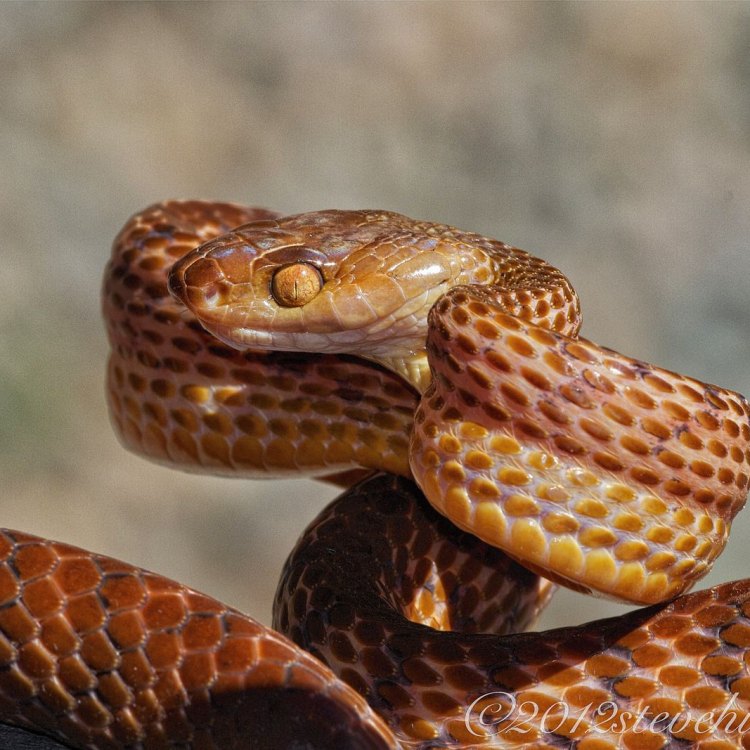
Brown Tree Snake
- Adult Size: 1.5 to 2 meters (4.9 to 6.6 feet)
- Average Lifespan: 10 to 20 years
- Reproduction: Egg-laying
- Reproductive Behavior: Male combat
- Sound or Call: Hissing
- Migration Pattern: No regular migration pattern
- Social Groups: Solitary
- Behavior: Arboreal (tree-dwelling) and nocturnal
- Threats: Habitat loss and fragmentation, predation on vulnerable bird populations
- Conservation Status: Not listed on the IUCN Red List
- Impact on Ecosystem: Predation on bird populations
- Human Use: Not used by humans
- Distinctive Features: Large eyes, slender body, and long tail
- Interesting Facts: Can climb trees vertically and even glide from one tree to another
- Predator: Birds of prey, mammals, and larger reptiles
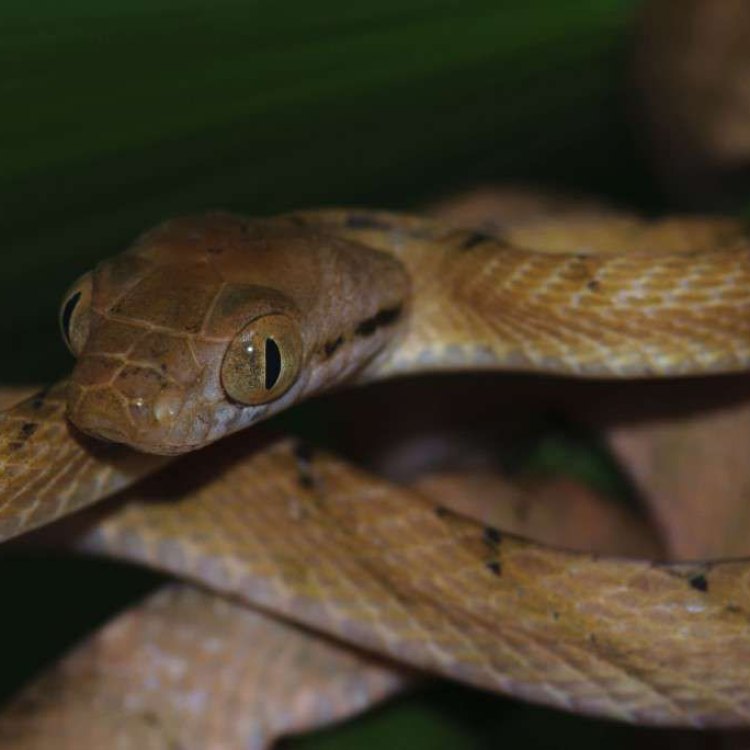
Boiga irregularis
The Brown Tree Snake: A Threatening Presence in the Pacific
Snakes often evoke fear and fascination within us. They have been portrayed as cunning and dangerous predators in popular media. However, one particular species, the Brown Tree Snake, has gained notoriety for its impact on the ecosystem and human communities in the Pacific region.The Brown Tree Snake (Boiga irregularis) is a species of snake native to the northern and eastern coast of Australia, Papua New Guinea, and the Solomon Islands PeaceOfAnimals.Com. It was accidentally introduced to the Pacific island of Guam after World War II through cargo transportation. Since then, it has become a problematic invasive species in the region, causing significant ecological and economic damage.
The Brown Tree Snake is a relatively large snake, with adults typically growing between 1.5 to 2 meters (4.9 to 6.6 feet) in length. They can vary in color from dark brown to tan, with a lighter belly and dark spots on their body. They have a slender body, large eyes, and a long tail, making them efficient climbers.
These snakes have an average lifespan of 10 to 20 years and reach sexual maturity at about 2 years old Budgerigar. They are egg-laying snakes, with females typically laying 4-12 eggs in a clutch. Interestingly, these snakes have a distinctive reproductive behavior known as "male combat." During mating, males will engage in intense bouts of combat, biting and grappling with each other, to win the right to mate with a female.
Brown Tree Snakes are primarily nocturnal and arboreal, meaning they spend most of their time in trees. They are agile and can climb trees vertically, using their sharp claws and muscular body to propel themselves. They have also been observed "gliding" from one tree to another, using their long, slender body as a wing-like structure to glide through the air. This unique ability allows them to move between trees and cover long distances to forage for food.
The diet of Brown Tree Snakes consists of a wide range of prey, including lizards, small mammals, birds, and their eggs. This versatile diet has contributed to their successful invasion, as they can survive in various environments with abundant food sources. However, their predation on vulnerable bird populations has had a severe impact on the ecosystem.
Due to their predatory nature, the introduction of Brown Tree Snakes to Guam has caused a significant decline in the population of birds, especially the Mariana crow and Micronesian megapode. These birds have no natural defense strategies against the snake, making them easy targets. It is estimated that the Brown Tree Snake has caused the extinction of ten bird species on Guam and has severely impacted many others.
Their presence has also disrupted the balance of the ecosystem, as the disappearance of birds has resulted in an increase in insect populations. This, in turn, has affected plant pollination, leading to further ecological consequences.
Despite their impact on the ecosystem, the Brown Tree Snake is not listed on the International Union for Conservation of Nature (IUCN) Red List. This may be due to their limited distribution in the Pacific and the lack of research on their population and threats. However, they are classified as an "invasive species of significant concern" by the U.S. Department of Agriculture.
Apart from their ecological impact, Brown Tree Snakes have also caused significant problems for human communities in the Pacific. These snakes are commonly found near human settlements, often entering homes and causing disturbances. They also pose a threat to small pets, such as cats and dogs. The abundance of Brown Tree Snakes on Guam has caused power outages due to their tendency to climb power lines and cause short circuits.
Efforts have been made to control the population of Brown Tree Snakes on Guam, such as installing snake-proof fences and trapping programs. However, these methods have not been entirely successful, and the snakes continue to pose a threat to the ecosystem and human communities.
Besides their ecological and economic impact, the Brown Tree Snake has many interesting facts that make them stand out among other snake species. They are known for their ability to climb vertically, move from tree to tree, and even glide. They also hiss when threatened, making a distinctive sound that serves as a warning to potential predators.
The primary predators of Brown Tree Snakes are birds of prey, such as hawks and eagles, mammals like feral cats and rats, and larger reptiles, such as pythons and monitor lizards. However, these predators are scarce on Guam, contributing to the successful invasion of the Brown Tree Snake.
In conclusion, the Brown Tree Snake may seem like a harmless species at first glance, but its introduction to Guam has caused significant ecological and economic damage. Their unique features and behaviors have contributed to their success as an invasive species, and their impact on the ecosystem cannot be underestimated. Efforts must be made to control their population and prevent their spread to other Pacific islands to protect the delicate balance of the ecosystem and the well-being of human communities.
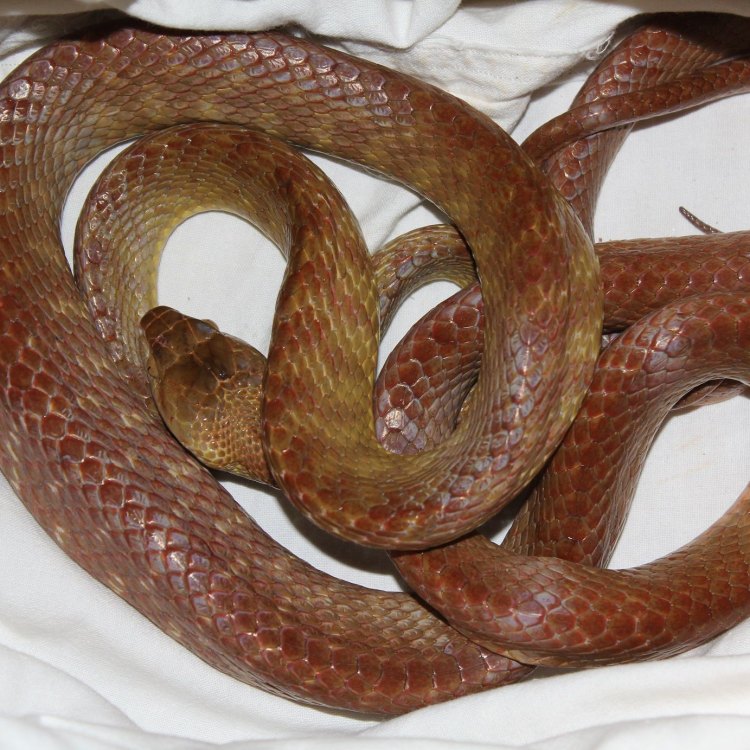
The Fascinating World of the Brown Tree Snake
Disclaimer: The content provided is for informational purposes only. We cannot guarantee the accuracy of the information on this page 100%. All information provided here may change without prior notice.


